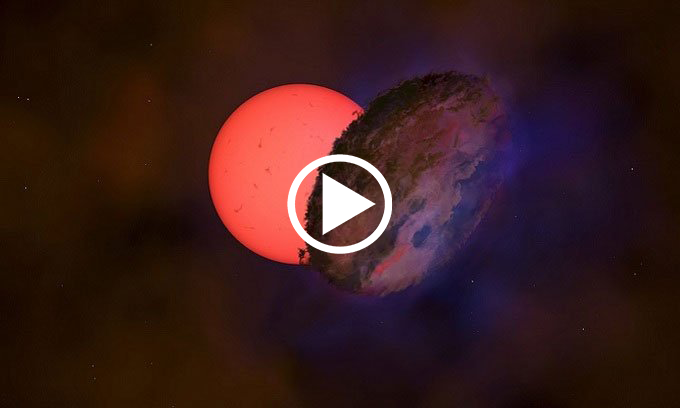Astronomers have discovered the star VVV-WIT-08 more than 25,000 light years from Earth, flashing periodically.
An international team of astronomers observed that the star VVV-WIT-08 was fading in brightness, almost making it disappear from the sky. While many stars change in brightness because they are eclipsed by another star in the binary system, it is rare for a star to darken after a period of several months and then light up again.
Researchers suggest that VVV-WIT-08 may belong to a new class of giant blinking binary star systems, in which a star 100 times more massive than the Sun is obscured every few decades by a companion with a hidden face. This companion could be another star or planet, surrounded by a weak disk. This weak disk causes the massive star to disappear and reappear in the sky.
The results of the study were published in the journal Monthly Notices of the Royal Astronomical Society. Led by Dr Leigh Smith of the Institute of Astronomy, University of Cambridge, with scientists from the University of Edinburgh, the University of Hertfordshire, the University of Warsaw in Poland and the Andres Bello University in Chile.
Since VVV-WIT-08 is located in a star-dense region of the Milky Way, the researchers examined whether a dark object was drifting in front of the star. However, the simulation results show that a large amount of dark objects drifting around the galaxy is needed for this to happen and it is not possible.
The researchers recorded another similar star system. Every 27 years, the giant star Epsilon Aurigae is partially obscured by the massive dust disk, but only darkens by about 50%. A second example is the TYC star 2505-672-1 found a few years ago and eclipsed every 69 years.
VVV-WIT-08 was discovered by the VISTA Variables program as part of the Via Lactea Survey (VVV) project, using the VISTA telescope in Chile and operated by the European Southern Observatory. Meanwhile, the Optical Gravitational Lens (OGLE) experiment conducted by the University of Warsaw also observed the star’s gradation process. Google’s regular observations played an important role in modeling VVV-WIT-08, which shows the star to darken in visible and infrared light.


